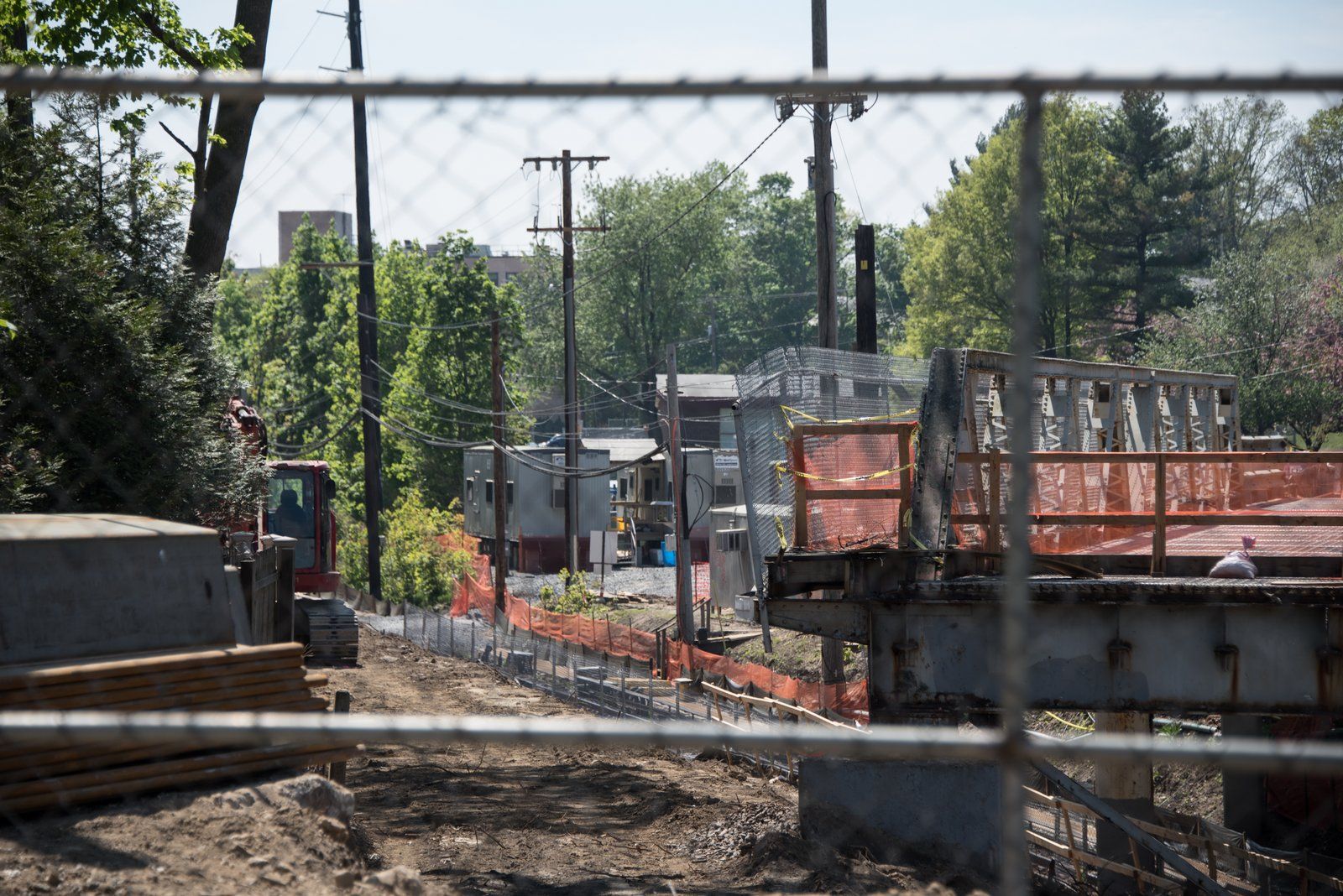Long Island Rail Road workers continued preparing the Colonial Road Bridge in the Village of Thomaston this past weekend for the bridge’s June demolition, removing lead paint from the bridge and starting work on a new retaining wall and drainage improvements.
The weekend work caused a suspension of LIRR service between Port Washington and Great Neck on Saturday.
MTA LIRR Spokesman Salvatore Arena said this past weekend was the last weekend service will be changed as a result of construction until the weekend of June 20 and June 21 when the bridge is scheduled to be demolished.
Arena said construction workers will be doing additional prep work until the demolition weekend.
“They’ll do whatever they can do in the interim,” Arena said of the construction workers. “The bridge demolition is the first major step — [the workers] may not be there every day but work will continue.”
The 115-year-old Colonial Road Bridge, which is located at the intersection of Colonial Road and Grace Avenue, has been closed to vehicular traffic since March 30, and will remain closed for a year.
After the demolition, the MTA will spend the next year building a new bridge as part of a $24.9 project that includes making track-level drainage improvements, building a retaining wall and extending an existing pocket track used to turn trains around.
The MTA has said the replacement of the bridge is essential to the East Side Access project, which will bring the LIRR straight into Grand Central Station in Manhattan. The project, which the MTA says is still about seven years away, will cut the travel time of commuters who work on Manhattan’s east side by 20 to 30 minutes when completed.
Village of Thomaston Mayor Steven Weinberg said the LIRR is communicating with the village as construction moves forward, keeping them updated on its progress.
To allow for a construction staging area, Weinberg said, trees were removed along Grace Avenue, making construction more visible from some homes.
“The railroad does have a vegetation plan for replanting the trees but that’s one to two years from now,” Weinberg said. “In the interim, it’s going to be a huge discomfort.”



